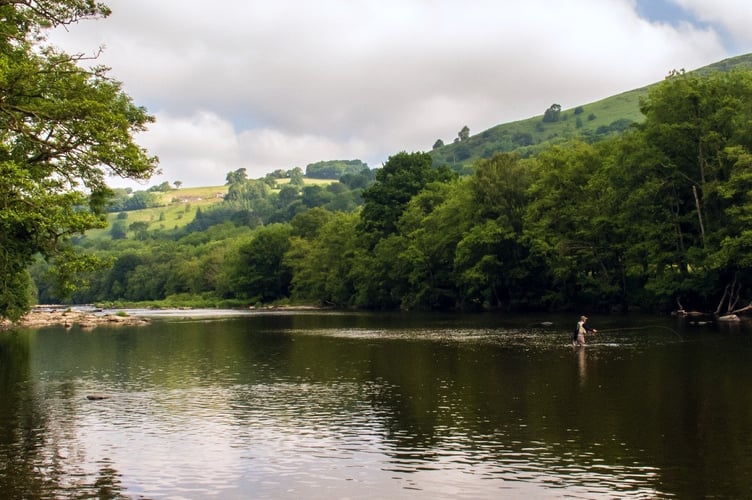Efforts to fix the declining health of the River Wye have focused too much on one particular problem - phosphates from fertiliser – and have overlooked others, researchers say.
The reported increase in the frequency of “algal blooms” in the river has set further pollution alarm bells ringing.
The blooms are harmful to the river’s wildlife and people fishing, boating and swimming, and have been largely blamed by environmental campaigners on industrial-sized chicken farms and other livestock farming, with the muck spread on already saturated fields washing into the river.
But a new report by Cardiff University researchers, funded by the Wye and Usk Foundation (WUF) conservation group, shows the river’s phosphate levels are lower than shown in historical records, and unlikely to be the main cause.
Instead, they conclude that increasing levels of ammonium and nitrate, along with seasonal changes to the river’s flow and high summer temperatures, are all impacting the Wye’s health – and that a more holistic approach is needed.
Professor Rupert Perkins of Cardiff University’s School of Earth and Environmental Sciences and one of the report’s authors, said: “Phosphate is seen as a ‘low-hanging fruit’, an easy thing to focus on as the cause of poor water quality. But it’s just one piece of the jigsaw puzzle.
“By studying the biology with eDNA, alongside water quality measurements, we get a far better understanding of the range of causes behind the problems.”
Between June and November in 2022/2023, the team collected 365 samples from 14 sites along the 200km river.
They were analysed to produce a biological fingerprint called environmental DNA (eDNA) of the cyanobacteria present.
Thom Bellamy, another of the report’s authors and a PhD student at the School of EES, added: “This process of extracting the eDNA is important because it gives us an understanding of how the different species are working together in the river.
“Our analysis showed no single species dominance but instead a diverse composition comprising diatoms, green algae and a low level of cyanobacteria.
“Our eDNA data also corresponds with historical algal surveys conducted on the Wye, suggesting on this measure at least there has been no significant change.
“However, what has changed is the level of nitrate we detected which... was higher than previously reported.
“This demonstrates... that we must look beyond phosphorous levels and monitor the whole suite of nutrients in the river.”
“We’re not saying we can forget about phosphorous altogether,” Professor Perkins warns.
“We must look at all nutrients as well as flow rates, temperature and the biology of the Wye, working in the catchment on precautionary and preventative approaches.
“Generating an action plan that deals holistically with the range of causes that affect water quality will help organisations like Natural Resources Wales and the Environment Agency in river management on the Wye and on a much wider scale too.
“It’s a beautiful river with lots of great wildlife but we need to look at the bigger picture and not silver-bullet quick fixes.”
The report is the latest development in a longstanding partnership between Cardiff University and WUF, which began in 2018 as part of an award-winning citizen science project.
Simon Evans, WUF chief executive, added: “While phosphate levels in the Wye have been declining in large part due to investment by Dŵr Cymru Welsh Water, we were still receiving reports... that algal blooms had been spotted and were getting worse...
“This didn’t make sense. And so, to better understand what was going on we instigated and funded this study.
“It shows the current focus on phosphate is misplaced, and we need to manage flow, reduce water temperature, shade our rivers and set science-based thresholds for all nutrients.”




